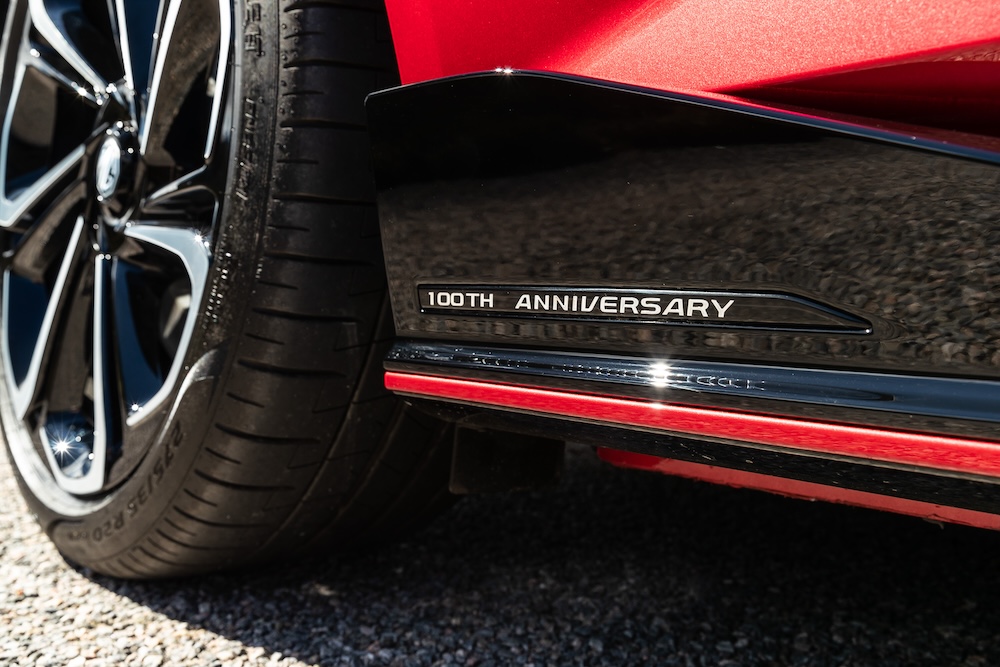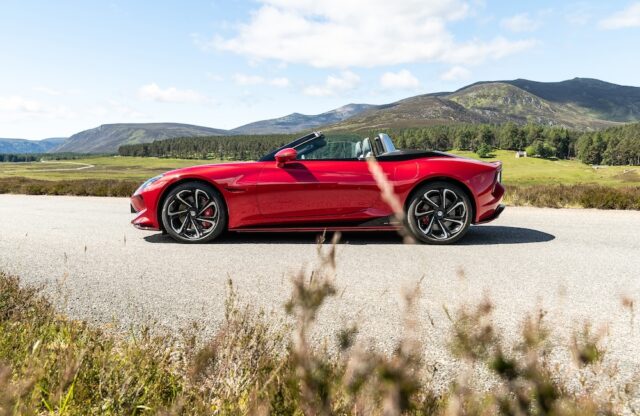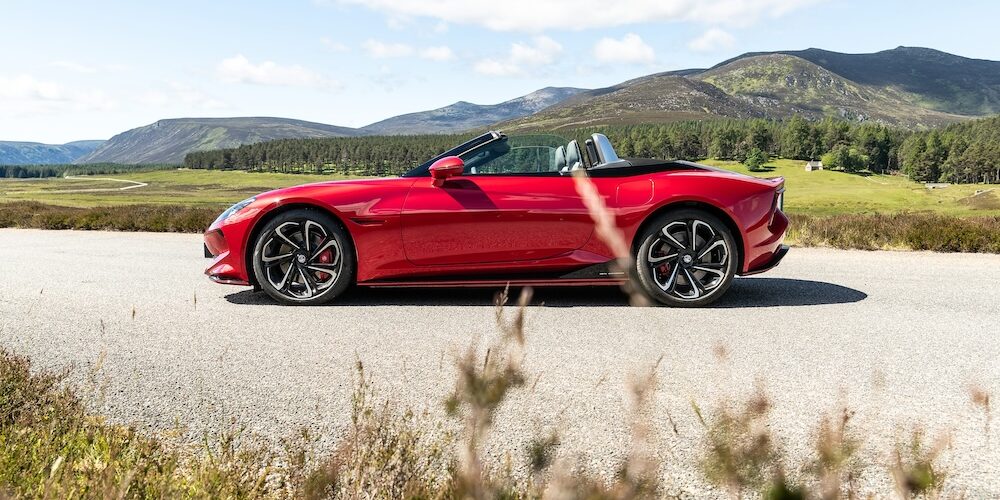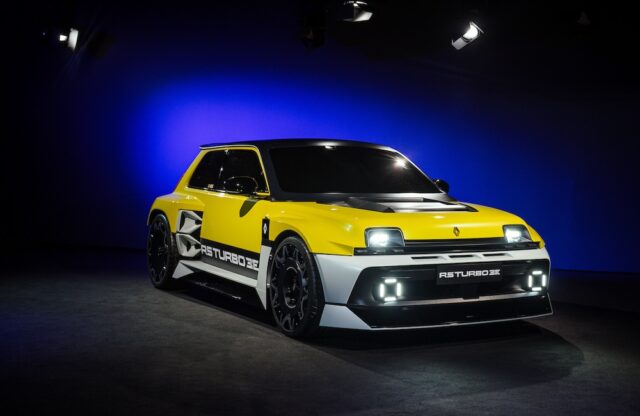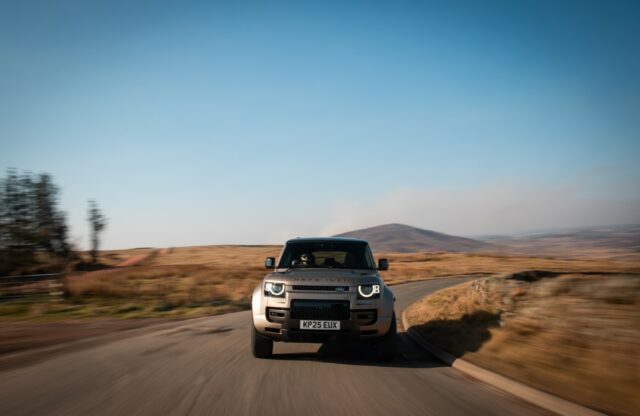We all know what an MG sports car should be, right? Small, nimble, affordable, quick but not necessarily truly fast, and probably created from the company parts bins. In the 100 years since the first MG was produced, that’s mostly been the case.
But of course things are different now. Since 2006, MG has been Chinese-owned, and the brand is fast becoming known for extremely competitively priced everyday ICE, hybrid and EV hatchbacks, saloons and SUVs. The familiarity of the MG badge has allowed the company to make inroads into Europe in particular, where other Chinese brands have so far failed.
But now we have something completely different; not just for MG but for the car market in general. The MG Cyberster is a two-seater EV roadster – the first mass-produced example of such in the world – that is a little bigger and significantly heavier than a current BMW Z4, priced in the UK at almost £60,000 and spectacularly fast. Oh, and it ticks the ‘parts bin’ identity, because it’s based on the MG4 EV platform.
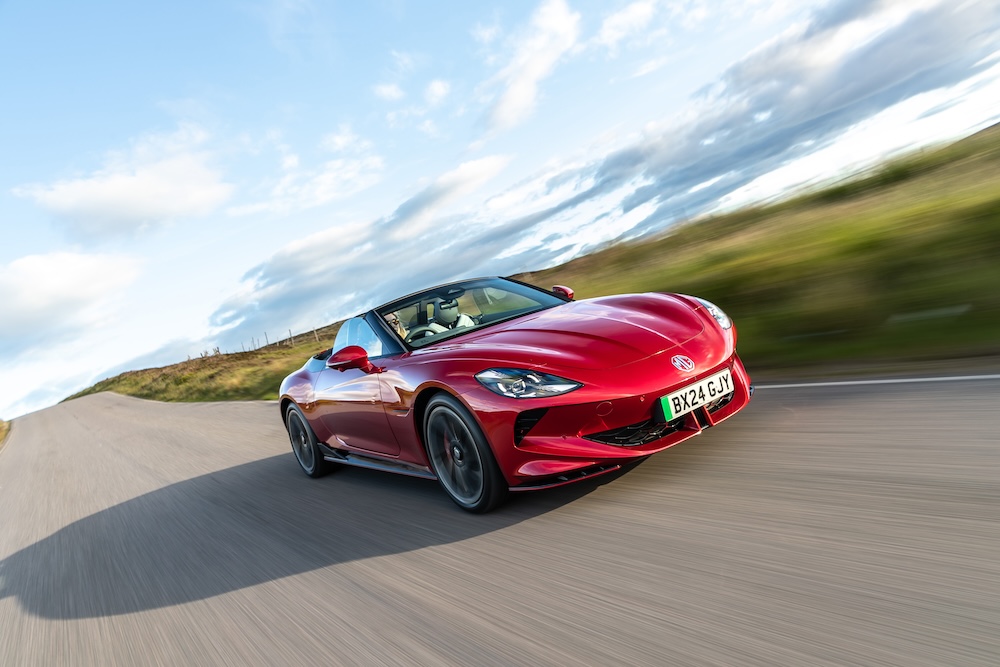
It was conceived in MG’s London design studio, and worked on in conjunction with the Shanghai studio. Its gestation took it from wild sketches and speedster-esque styling models to the concept shown at the home-market-only 2021 Shanghai Motor Show during the last days of lockdown. The production model has changed little from the show car, even retaining its electric scissor doors, and it was evaluated to European tastes by MG’s Solihull engineering team, close to the site of the old MG Rover Longbridge plant.
The result of the UK engineers’ intervention was multiple changes to the car, including tweaks to the handling and steering, the addition of a one-pedal mode of regenerative braking, lowering the seats, enlarging the boot to give enough room for a golf bag to fit diagonally, and changing the artificial noise generation (including the required pedestrian warning).

So, the Cyberster should feel right for the UK and European market, but don’t expect it to be a Mazda MX-5 rival. This is a more grown-up, comfortable kind of convertible that performs and handles far better than you might expect.
That the Cyberster is all-electric is almost an aside in many ways, because it makes the very best of the advantages of EV (high torque and smoothness of power delivery) while doing a decent job of overcoming the disadvantages (weight and lack of soundtrack). Of course, we can add manual gearboxes, or lack of, into the list of disadvantages, too, although several of the Cyberster’s ICE-powered equivalents are now paddle-shift automatics anyway. The battery pack, although slim at just 110mm tall, does mean the seating position is distinctly more GT than sports car, too.

What is clear from the first few miles of our 120-mile test drive in the Scottish highlands is that the Cyberster feels instantly competent. It will glide away from standstill as smoothly as you could possibly want, or it will take off like a rocket, making full use of that massive torque. How massive? Well that depends on the model…
There are two Cyberster variants available, both with 77kW batteries. The single motor, rear-wheel-drive Trophy, priced in the UK at £54,995, gives 250kW of power and 475Nm of torque, for a highly respectable 0-62mph time of 5.0 seconds. The twin-motor, four-wheel-drive GT is £59,995, and provides a whopping 375kW of power and 725Nm of torque, which translates to a 0-62mph time of just 3.2 seconds. That’s supercar acceleration! Indeed, the McLaren F1’s official 0-60mph was 3.2 seconds back in the 1990s.
So the Cyberster is genuinely fast in Trophy form and ballistic as the GT, but what’s really impressive is the way they handle and steer given all that torque and the not inconsiderable weight of 1885kg for the Trophy and 1985kg for the GT. That’s more than double the weight of a 1960s MGB – but, of course, the levels of safety, performance and comfort are considerably higher, and the levels of luxury are in another league.
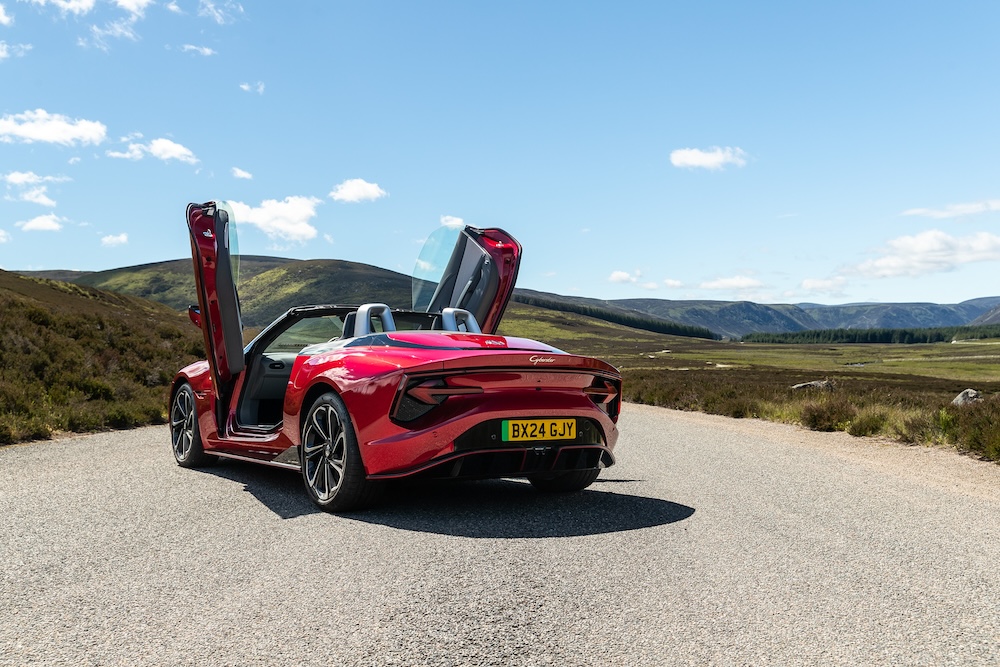
First off, there are the trick electric scissors doors, which operate via buttons on the dashboard, the lower edges of the interior door panels and an awkward-looking switch on the top of the door, as well as with the remote control. They prove an immediate talking point without proving tiresome, and I suspect anyone who’s got to that age of involuntary groans when sitting down or standing up will appreciate the easier access they give, as well as the higher seating position.
The interior is trimmed in an environmentally friendly leather-look material, which is no less convincing as hide than many of the current examples of the real thing. Android Auto, Apple CarPlay, eight-speaker Bose sound system, DAB, voice recognition and a 360° parking camera all come as standard. There’s a 10.25in screen directly in front of the driver for speedo and power use, flanked by 7in screens either side for sat-nav, infotainment, settings etc, and another screen in the central console for the climate controls among others.
The crucial buttons are haptic, which helps with a touchscreen, but thankfully most of the screen controls can be scrolled through and selected by the physical buttons on the steering wheel. The only true annoyance is that the steering wheel blocks the view of the two side screens.
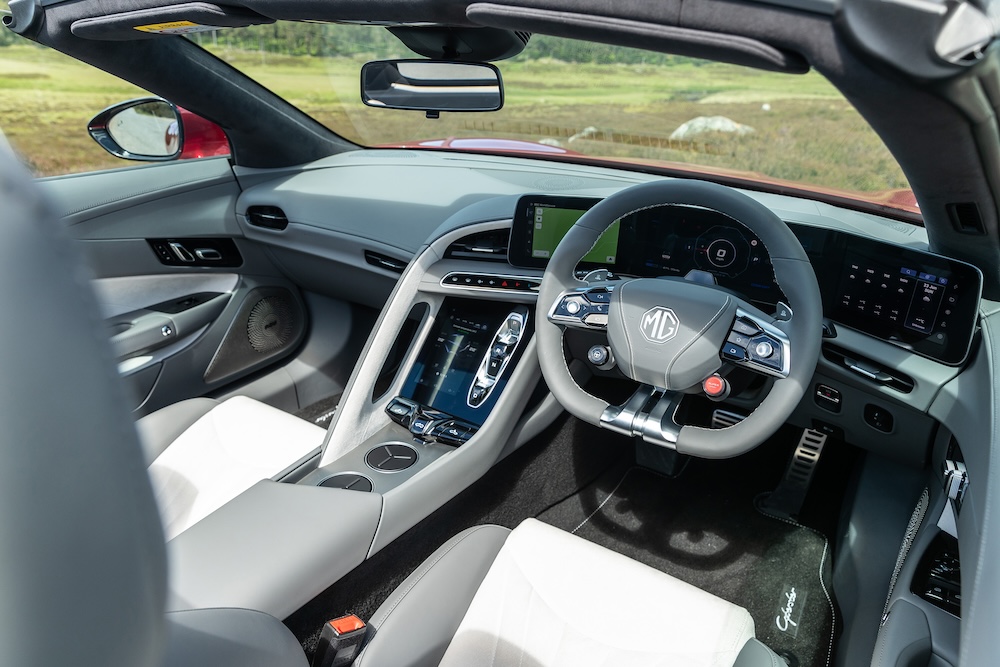
The fabric hood is electrically operated; with it down, the cabin feels snug but not cramped. In fact, there’s more than enough elbow space and legroom, but if you’re much over 6ft you might find that the top of your head brushes the hood and that your eyeline is a little too close to the lower edge of the windscreen header rail. With the top down, anyone tall might feel their head is just a little too close to the airflow over the top of the windscreen, but with side windows up and the wind deflector in place behind the rear seats, top-down comfort is actually pretty good.
Paddles behind the steering wheel control the amount of regenerative braking and the driving mode: chose from Comfort, Sport and Custom. These change the accelerator pedal sensitivity, the weight of the steering and, on the GT, determine whether or not it remains in four-wheel drive. There’s a fourth mode, too, amusingly activated by a non-too-subtle red button emblazoned with ‘Supersport’ on the steering wheel, which unleashes the full accelerative performance, even toning down the heating or air-con to ensure maximum power to the motors.
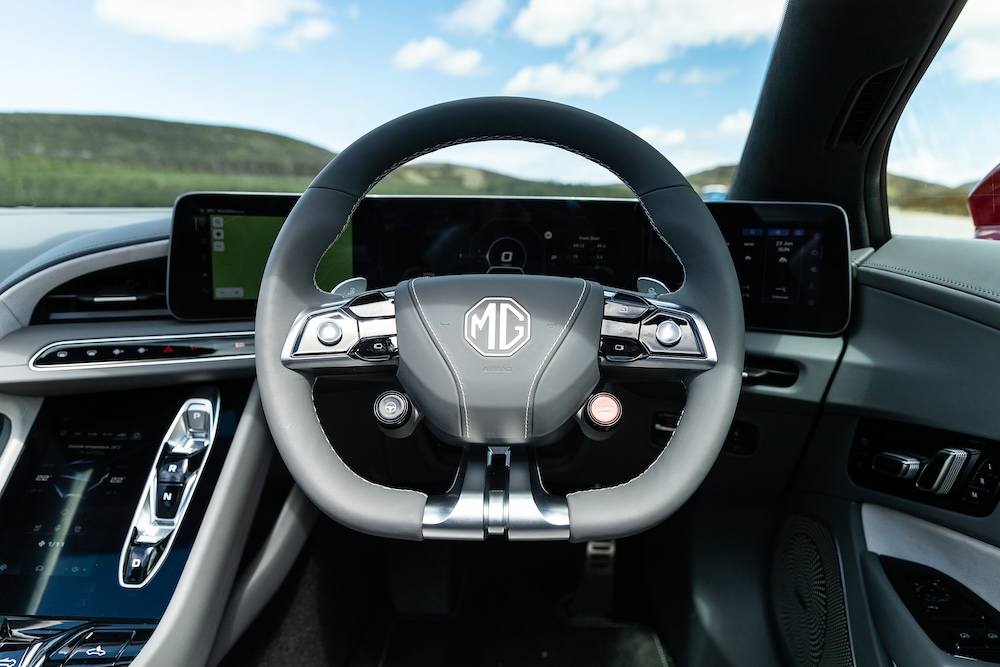
Regardless of mode, the standout surprise is the handling in everyday driving. The Cyberster corners flat and feels completely assured, getting ragged only when it’s pushed really hard, at which point it will predictably understeer into tight bends and bounce around on really undulating surfaces. Again, it’s that touring vibe rather than out-and-out sports car. That I’ve only just remembered to mention the brakes says a lot, too; they’re Brembos, they work well and, with regen braking added into the mix, I never had any cause to worry about stopping in time. Job done there, I think.
The power delivery, in both Trophy and GT, is never less than a pleasure. The Cyberster feels quick on the road, lapping up easy overtakes of slower traffic thanks to all that instantly available torque. The twin-motor GT is noticeably faster, but the Trophy feels livelier in its handling, a little more responsive and easy to throw around. I wouldn’t feel short-changed if I ended up with a Trophy rather than a GT – and the reward to sticking with the less expensive model is greater efficiency.
Ah yes, range… the maximum range (WLTP) stated for the GT is 276 miles, and 316 miles for the cheaper Trophy. Pretty good, and they seemed to correlate with what was achieved on our fast 120 mile A- and B-road drive through the highlands, swapping between Trophy and GT halfway.
There were times on this drive that I yearned to hear the sound of the exhaust bouncing off the stone walls, but other points at which it was a relief to be able to glide almost soundlessly through quiet villages, only the adjustable volume sound generator (there’s a choice of futuristic or ‘fuel sports car’ sounds’) announcing my presence. Wherever I was, I never thought the Cyberster needed more power and torque to justify its existence.

It’s not a bad looker, either. Unusually, it’s a visually together with hood up or down, and the wheel size (19in for the Trophy, 20in for the GT) doesn’t make a big difference, either. The black band above the rear flanks and around the rear of the cabin is a little odd, and the arrow-shaped rear lights a bit on the cheesy side, but this is a distinctive design rather than the blandness we see so much of. There are five different colours available – ‘New English White’, red, grey, silver and yellow – plus the option of a red hood with some of these (not the red or the yellow, thankfully) and several interior trim choices, to give 32 colour combinations overall.
Was I expecting to enjoy an EV roadster so much? No, of course I wasn’t. The Cyberster is a great, easy drive that does justice to the MG badge. It’s not as sophisticated in places as a £55k-60k car should be, particularly in some of the switchgear, but it’s a little different from the norm and it’s certainly one of the most enjoyable EVs out there. Oh, and it’s very clear that if the influential UK team gets its way, there would be scope for a smaller, lighter, cheaper MG sports car to slot into the range in the future.
The UK is expected to be the strongest market outside China for the Cyberster, and the car will be available through selected MG dealers across the country. There are more details available here. MGs are now available in more than 60 territories, but there are no plans to try to crack the US for now.
